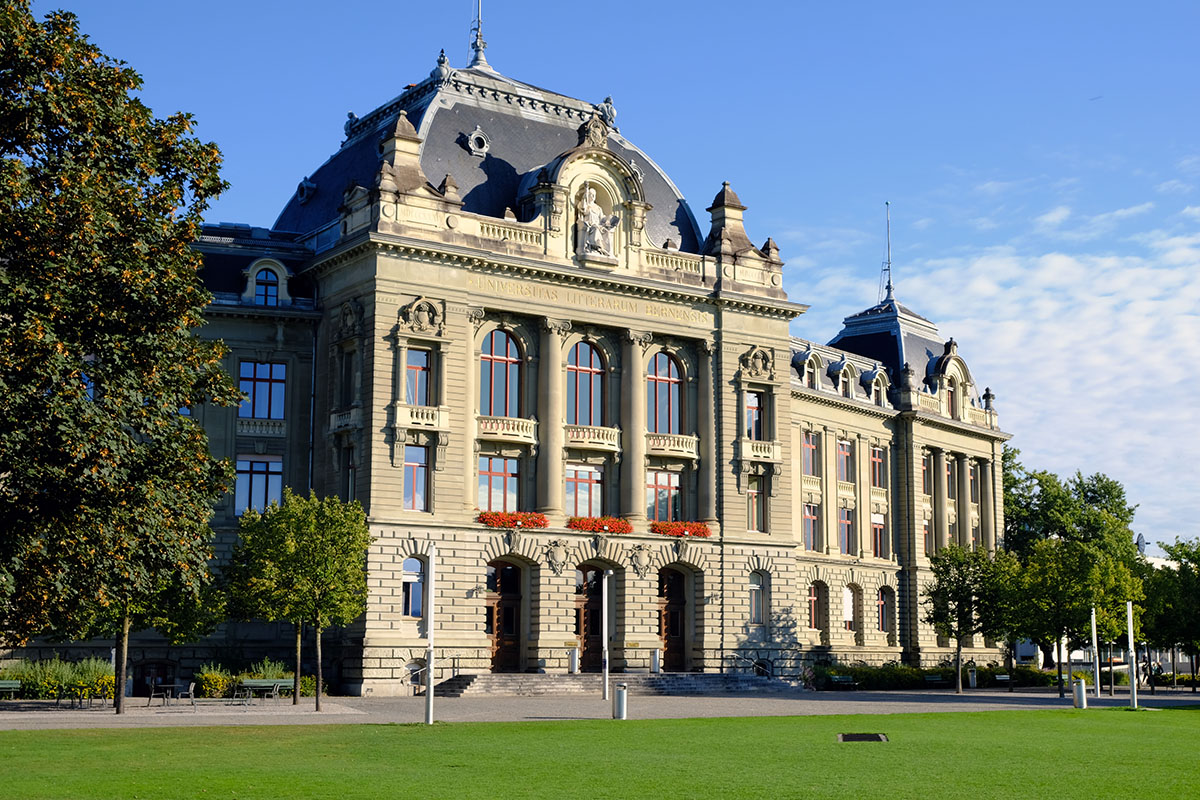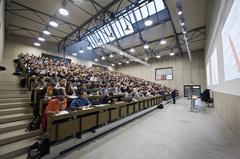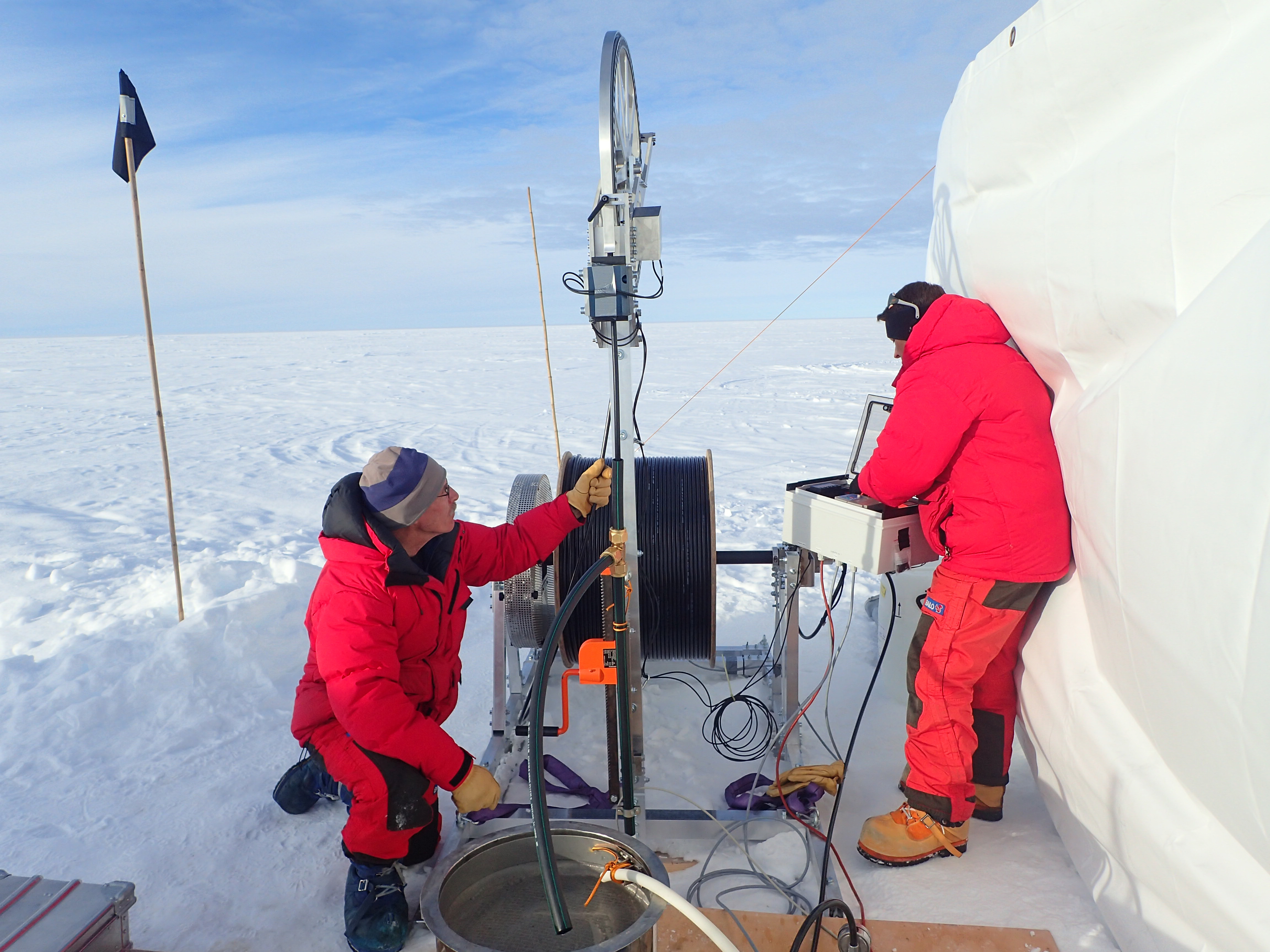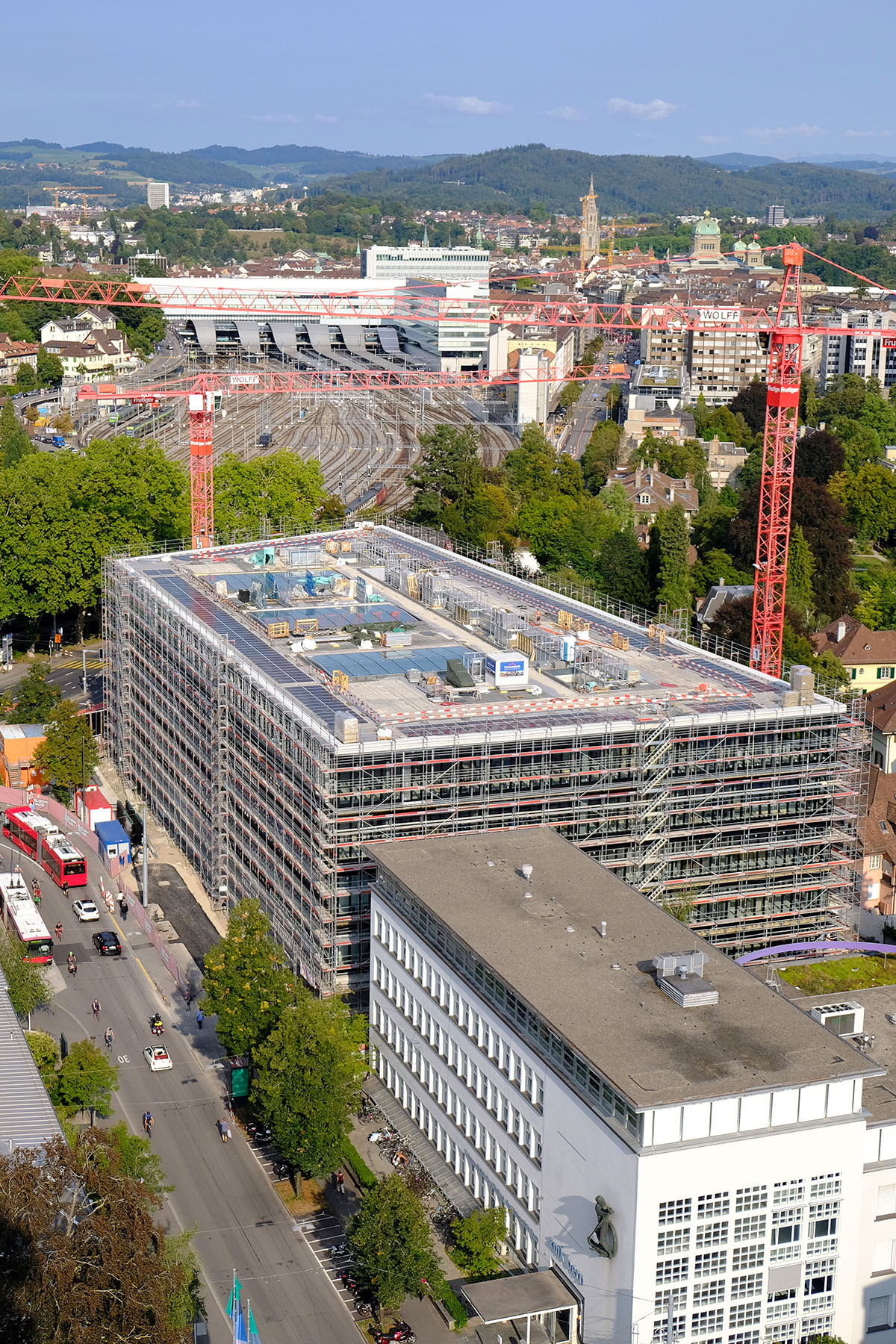Strenghtening the position as a medical center
A hundred additional medical students are starting their studies at the University of Bern’s Faculty of Medicine in the new semester. The University of Bern is also driving its international networking, public private partnerships, digitalization and various construction projects forward in the new academic year.
The University of Bern’s Faculty of Medicine has increased its capacity by 100 university places to contribute to tackling the shortage of doctors. The 100 additional medical students can now start their studies on 14 September 2018. "We are strengthening Bern as a medical center with this expansion," says Rector Christian Leumann. The University of Bern is also catering to a national need in pharmacy: a full-time studies course in pharmacy is being developed to counteract the shortage of pharmacists from the 2019 fall semester. The Faculty of Medicine is now also the largest faculty at the University of Bern with its roughly 3,000 students.
Rising student numbers overall
It’s not just in medicine that the student numbers are rising but overall, having remained stable at a high level in previous years: more than 17,900 students are going to be registered at the University of Bern in the 2018 fall semester. Among the new registrations, just under 2,300 Bachelor students are being reckoned with while 563 people are applying for a Master’s degree program. The latter are either coming from other universities or applying to the University of Bern again having taken a break from studies. "Our Master’s degree programs are therefore still attractive to students from other Swiss universities and abroad," says Prof. Bruno Moretti, Vice-Rector for Teaching. The most popular degree courses are still at the Faculty of Science, which will be the second largest faculty this year with roughly 2,500 students.
Working together with the canton, Inselspital hospital and industry
With sitem Insel, the University of Bern is investing in a public private partnership with the canton, Inselspital hospital and private partnerships. One example resulting from this collaboration is the diabetes research center that was commissioned in 2017 and will move into the new sitem Insel building on Inselplatz in 2019. The translation of research results into application is also being strengthened, for example by developing a platform for cell therapy with industrial partners and university hospitals in Switzerland, developing specialist workshops and laboratories or through the targeted further training of professionals at the sitem Swiss School.
Digitalization as an opportunity
The University of Bern is currently occupying itself intensively with its digital further development. "Digitalization offers great opportunities for the University of Bern in teaching, research, further training and for internal processes," says Leumann. "We want to get students and employees fit for the digital transformation, for example by teaching them digital skills like programming or data science."
More space for research and teaching
SBB sold two of its administration buildings, 6 Hochschulstrasse and 43 Mittelstrasse, to the Canton of Bern ten years ago. It had committed itself to providing the University of Bern with the ideal space for students and employees in the Länggasse neighborhood in its “Strategy 3012” (named after the neighborhood’s postcode). The second property after Hochschulstrasse 6 was officially inaugurated in May this year with Uni Mittelstrasse. "The development of additional space and a research infrastructure is once of the biggest challenges at the moments," says Leumann. The foundation stone for the new laboratory building on Murtenstrasse, which is going to used by the Institute of Forensic Medicine and the Department for BioMedical Research (DBMR) one day, was laid in April 2018. "There are other major building projects pending with the Uni Muesmatt and Insel site’s building zone 7 projects," continues Leumann.
International top university
"As the rankings prove, the University of Bern is among the top 100 to 150 universities in the world and is an international leader in many fields of research," explains Leumann. Bern’s space research, for example, has been constantly expanding its international leading role for 50 years and is currently involved in several ESA and NASA missions. "The University of Bern also delivers high quality research and teaching in biomedical research and sustainability though and makes important contributions to researching global trade and climate change. New methods are currently being developed to measure greenhouse gases in polar ice cores," continues Leumann. Four National Centers of Competence in Research (NCCRs) are based at the University of Bern and it belongs to international research associations. In 2017 the University of Bern was also accepted into "The Guild", a network of research-intensive universities. "International networking is extremely important to us," explains Leumann. "It doesn’t just raise the University of Bern’s international profile but that of Switzerland and the Canton of Bern too".
2018/09/13






